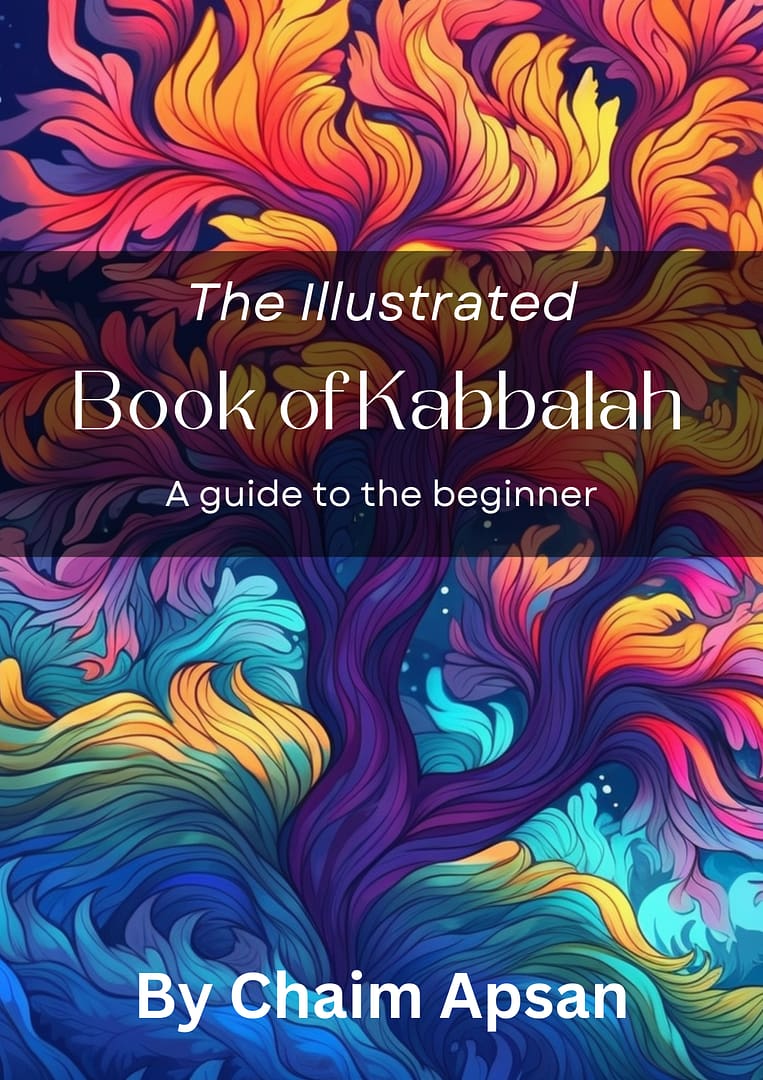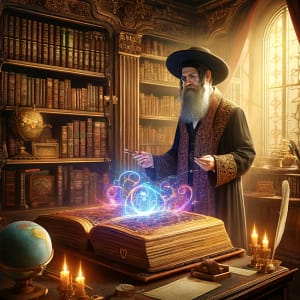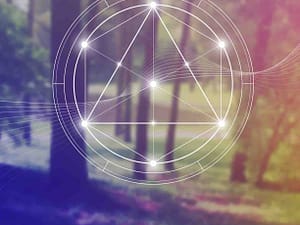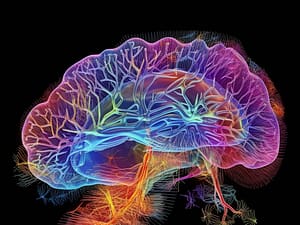The Tikkun HaKlali stands as one of Rebbe Nachman’s greatest revelations
The Tikkun HaKlali (lit. “general rectification”) is a set of 10 chapters of Tehilim (psalms): 16, 32, 41, 42, 59, 72, 90, 105, 137, 150. They were revealed by Rebbe Nachman of Breslov as a great remedy for the sins of the Sephirat HaYesod (the “foundation”), which are those of sexual nature.
As we know, Shmirat HaBrit (guarding the brit) is one of the most important parts of Avodat Hashem, mainly for men but also for women. It involves not only abstaining from prohibited sexual activities but also sight, speech and thought. Due to its tremendous importance (and difficulty), many people don’t pay much attention to it.
A man who doesn’t guard his Brit has no share in Olam HaBah. This is brought by so many sources, from Kabbalah (like Rav Yaakov Abuchatzeirah) and otherwise, that I don’t think we need to quote here. Women who cause men to fall in this area share the same fate (or does anyone actually thinks that she will be exempt?).

The Power of Yosef HaTzadik
Not everyone can hold himself like Yosef HaTzadik. He’s the one who represents sexual purity and is the paradigm of the Sephirah of Yesod among the Tzadikim. Another Kabbalistic reason for this is also because, thanks to his self-discipline, he became viceroy and sustained the Hebrews when they were in Egypt until his death.
I believe it’s was the Maharsha who wrote that it’s in the merit of Yosef HaTzadik that nowadays men can withstand the temptations of the Yetzer HaRah. The Zohar brings that Yosef HaTzadik was 4 seconds away from sinning with Potifar’s wife. However, it’s not that he couldn’t resist her, rather he did it with the conscious intention to strike the Yetzer HaRah / Angel of Death, and open up a fountain of strength for men throughout the generations.
This strong impression of resisting the most beautiful woman in all of Egypt (with all her magic and charms) opened up a channel in the spiritual worlds, and it was all by design.
Rebbe Nachman of Breslov teaches in Likutey Moharan that Shmirat HaBrit is the key to having a strong Tefila. It’s also the way to merit the truth of the Torah. A man who doesn’t keep his Brit feels weak, powerless, lost, and severs his connection to Hashem.
The Kabbalistic reason is as follows:
We all possess the 5 levels of the soul (Nefesh, Ruach, Neshama, Chaya, Yechidah) with their 10 Sephirot each. The Nefesh is the one who generally needs rectification as it is the one who sins.
The Sephirah of Yesod parallels a person’s brit, and the seed is a tremendously holy type of light that must be exclusively directed to a “place of Mitzvah” (a womb). When a man spills his seed, he gives all this light to the Sitrah Achra, strengthening it tremendously. Not only that, but his soul falls to the lower realms, causing tremendous damage to it.
Let’s remind ourselves that the punishment for spilling seed is “Karet”. The reason is because Hashem would have no other resource to deal with the Sitrah Achra that attaches itself to the Nefesh of a person other than cutting it away entirely together with the evil. It’s like amputating a limb that has gangrene.
Obviously, there are Tikkunim that can be done. Tikkun HaKlali helps tremendously, but I am not sure it substitutes the full Tikkun that the Arizal prescribes (which involves fasting and Pidyonot). This is up for discussion later.
The light of the upper partzufim of Arich, Abbah, Immah pour down on Zeir Anpin. From there, they concentrate on the Sephira of Yesod to be delivered to the Shekhina. These are tremendously holy lights that come from Atik Yomin, which is even above Arich.
The holy Rashas’s (Rabbi Shalom Sharabi) teaches that each person has his own set of 4 spiritual worlds, and 6 Partzufim unique for every Torah, Mitzvah, Tefilah, Yichudim and Ma’assim Tovim. This is mindboggling if we stop to think a little.
As the Arizal teaches, a man is viewed as following the same pattern as Zeir Anpin, and so, if he spills seed outside the “Makom Mitzvah” (his wife), his corresponding Partzuf above also pours down all these to the Sitra Achra, empowering it to levels unimaginable. The Sitra Achra then can take hold of a person and drag him down to the lowest levels of depravity if he’s not careful.
If this happens, consciously or not, the queen of demons Lili-t (not to be pronounced) takes the spiritual power of the seed and impregnates herself with it “bearing children” to the man who created them.
These children, which are actually Mazikin (damaging demons), grab a person when he’s in Shamayim to take away his reward that Hashem would’ve given him.
Note that the Ben Ish Chai adds that the same happens for a woman “who spills her seed” without being intimate with her husband. To this end, the Arizal teaches many Kavanot for the night to destroy these entities. Particularly powerful is focusing on the word “Echad” of Shema Yisrael, and being Mekaven to eliminate them.
Thankfully though, there’s the Tikkun HaKlali, the Tikkunim of the Arizal, the Kavanot of the Arizal, and the Mikvah, which we should mention in a future post.
Rebbe Nachman’s explanation of the Tikkun HaKlali
From Likutey Moharan (1:29) we learn that:
בְּכֵן צָרִיךְ לְתַקֵּן כְּלָלִיּוּת הִגִּידִים, שֶׁהוּא בְּחִינַת (דברים ד׳:י״ג): וַיַּגֵּד לָכֶם אֶת בְּרִיתוֹ, וְאָז, עַל־יְדֵי תִּקּוּן הַבְּרִית, שֶׁהוּא כְּלָלִיּוּת הַגִּידִין, נִתְתַּקֵּן מִמֵּילָא כָּל הַלָּאוִין שֶׁעָבַר, וְנִמְשָׁךְ לָהֶם לַבְנוּנִית
וְעַל שֵׁם זֶה נִקְרָא כְּלָלִיּוּת הַגִּידִין שֶׁהוּא הַבְּרִית־קֹדֶשׁ, שַׁדַּי, עַל־שֵׁם שֶׁשָּׁדֵי וְיוֹרֶה כְּחֵץ לַבְנוּנִית וְתִקּוּנִים לְכָל פְּרָט וּפְרָט כְּפִי צָרְכּוֹ, וַאֲפִלּוּ לַמְּקוֹמוֹת הַצָּרִים וְהַדַּקִּים. כִּי יֵשׁ מְקוֹמוֹת צָרִים וְדַקִּים שֶׁאִי אֶפְשָׁר לָבוֹא לְשָׁם שׁוּם תִּקּוּן כִּי אִם עַל־יְדֵי תִּקּוּן הַכְּלָלִי, שֶׁהוּא זוֹרֵק לַבְנוּנִית וְתִקּוּנִים גַּם לַמְּקוֹמוֹת הַצָּרִים וְהַדַּקִּים. בִּבְחִינַת (איוב כ״ב:כ״ה): וְהָיָה שַׁדַּי בְּצָרֶיךָ – שֶׁשָּׁדֵי וְיוֹרֶה תִּקּוּנִין לְכָל מְקוֹמוֹת הַצָּרִים
Translation:
It is, therefore, necessary to rectify the generality of the GiDim, corresponding to (Devarim 4:13), “And yaGeD (He announced) to you His brit (covenant).” Then, by rectifying the brit, which is the generality of the gidim (sinews), all the prohibitions that he transgressed are rectified as a matter of course, and whiteness is drawn into them.
Because of this, the generality of the gidim, which is the holy brit, is called ShaDai ; because it ShaDi (shoots in Aramaic) and fires whiteness and rectifications to each and every detail according to its needs, even to those places which are narrow and tiny. For there are places that are so narrow and tiny that no rectification can reach there except the General Remedy which shoots whiteness and rectification even to the narrow and tiny places; as in (Yiov 22:25), “And Shadai (the Almighty) will be b’TZaRekha.” <That is, the concept of rectifying the brit / Shadai> shoots and fires rectifications <like an arrow> to all the TZaR (narrow) <and tiny> places, <as explained>.
As is Rebbe Nachman’s style, he teaches one concept first, then links it to a second, then to a third, and maybe a fourth, and then ties everything together. This is part of the beauty of Likutey Moharan, it encapsulates beautifully what true Chokhmah (wisdom) mean, the capacity to view the hidden connections between seemingly disparate ideas. But I digress.
We can’t go now over all his reasoning in that Torah, but the Tikkun HaKlali serves as a remedy to rectify the Brit. And there are 2 main “brits” in the body: one below and one in the mouth (i.e. the tongue).
One who has not rectified yet his brit below, also cannot pray properly (with the brit above).

This Torah is filled with Kabbalistic language which is not readily apparent. It’s interesting that later in the lesson, Rebbe Nachman draws the parallel between the seed which is originated in the whiteness of the brain to the “lebanon”. This is not really the geographical area of Lebanon, but rather, as the name implies, the whiteness of the Sephira of Keter.
From Keter emanates all Tikkunim to the lower Partzufim. The Partzufim are also all composed of sinews, bones and flesh, but of course not in a way a human being is. As I explained in this article, they are the blueprint for human beings.
Summarizing this long Torah, Rebbe Nachman is saying that the Tikkun HaKlali comes from the Sephira of Keter, from which all Tikkunim (rectifications) are affected. They are incredibly powerful to not only heal all the aspects of a person but also restore a person’s power of prayer through the rectification of the upper brit (the mouth).
The power of the Tikkun HaKlali
Before I got married, the Tikkun HaKlali protected me from desire and acquiring self-discipline. There’s no way to describe the incredible help it provided. In an ever-increasing hedonistic society, any semblance of self-restraint is seen as silly puritanism. But, this is one of the things that can only be experienced through… well, experience. Power does come from discipline.
It is a Breslov minhag to do these Psalms every day for protection, even if a man is clean from Keri. There’s a famous segulah of reciting Tikkun HaKlali for 40 days, in line with what Reb Natan (Rebbe Nachman’s main disciple) wrote that a prayer that is “said for 40 days makes a strong impression” in the spiritual worlds above.
In one of his shiurim, Rav Berland also taught that reciting 7 times the Tikkun HaKlali is like an “atomic bomb” in the spiritual worlds. Indeed, in many instances, he brought about revealed miracles like reviving people from comas when in a hospital, by reciting the Tikkun HaKlali 7 times.
Conclusion and other remarks
The power of Tikkun HaKlali is evident and cannot be contested.
It’s not just Chassidei Breslov that have adopted it, but many people from other lines do it. What is interesting is that many Chassidic Rebbes (have to find their names) also revealed that there were “10 special psalms” that affect huge rectifications, but they did not reveal which ones they were.
In our generation, it is now more critical than ever for men to say it, even if they think they are protected. The effects of Tikkun Haklali are also cumulative, as with every other Segulah or prayer. Even if one has an “accident at night”, he should all the more so say these 10 psalms.
I cannot emphasize saying the Tikkun HaKlali enough for men who are struggling with shmirat habrit. This is not a trivial matter, it’s literally one’s own personal connection to the Creator at stake. The whole concept of Avodat Hashem surrounds it as it is the Yesod – the foundation of everything.
Another source of chizzuk is the Guard Your Eyes community – www.guardyoureyes.com – which also helped me a lot. This is a community of Rabbis and other Jews to help Jews who are struggling with shmirat eynayim, which is of course related to shmirat habrit.
Please share this article around to any man who is struggling and you will be literally saving his soul.













